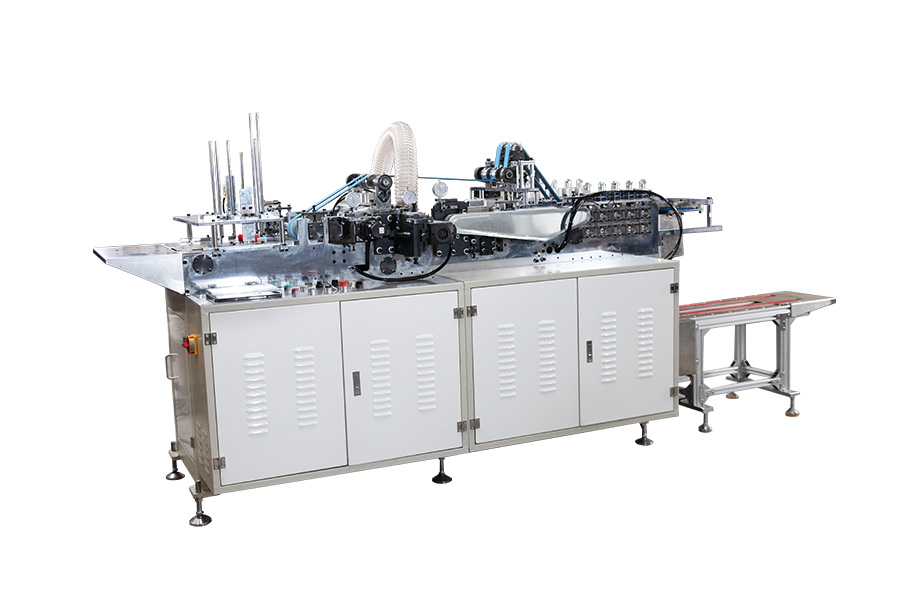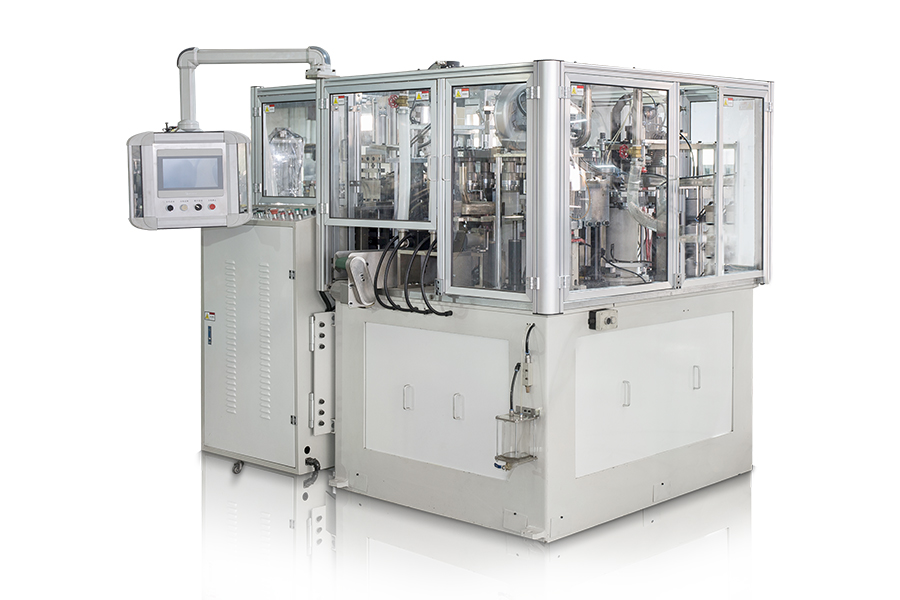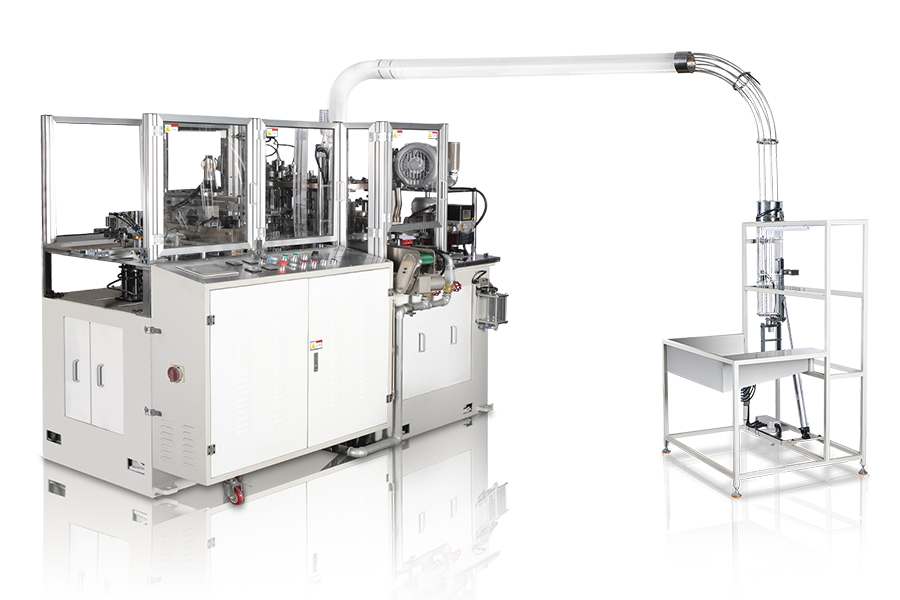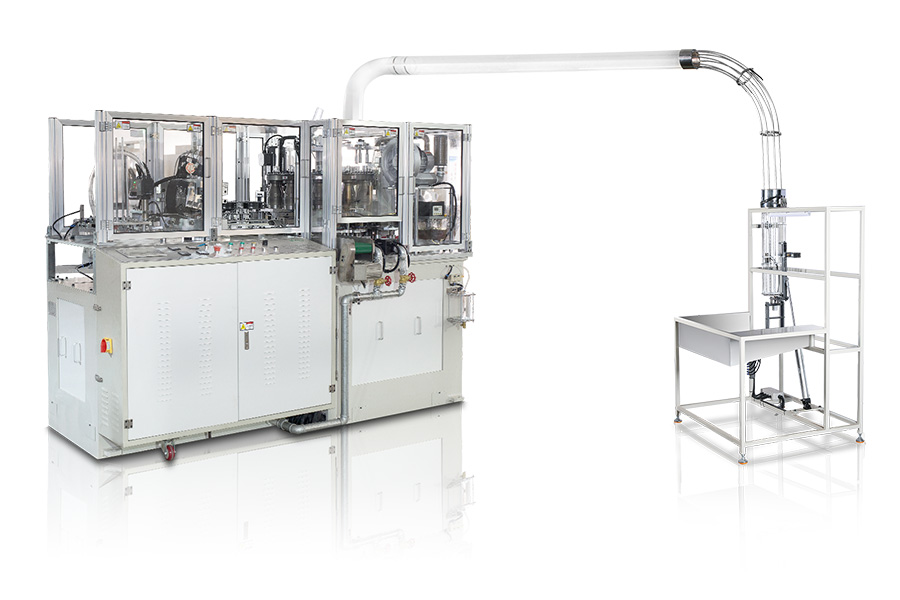Understanding the Operational Principles of a Paper Lid Machine
The PLM-60 paper lid machine operates on a fully automated principle that transforms a roll of paperboard into finished, precisely formed lids without the need for constant manual intervention. The process begins with the unwinding of the paperboard material from a large roll, which is then fed through a series of guiding and tensioning mechanisms to ensure smooth and consistent material flow. The paper passes through a printing unit if in-line printing is required, after which it moves to a punching and creasing station. This station is critical as it die-cuts the paper into the specific blank shape for the lid and creates the precise crease lines that allow for easy folding. The formed blank is then transported to the molding unit where it is wrapped around a mandrel and the edges are securely locked together using a gluing system, resulting in a structurally sound and ready-to-use paper lid that is subsequently ejected for packaging or direct use.
The Significant Advantages of Adopting an Automatic Lid Making System
Integrating an automatic paper lid making machine like the PLM-60 into a production line brings forth a multitude of benefits that directly impact operational efficiency and profitability. The most immediate advantage is the dramatic increase in production speed and output consistency, as the machine can operate continuously at a high rate, producing thousands of uniform lids per hour, far surpassing what is possible with manual or semi-automated methods. This automation significantly reduces the long-term operational costs associated with labor, as a single operator can oversee the entire process. Furthermore, the precision engineering of such machines minimizes material waste by optimizing the nesting of lid blanks on the paperboard web and ensuring that each lid is formed to exact specifications, reducing the rate of defective products and maximizing the utilization of raw materials.
Analyzing the Key Features of a Modern Paper Lid Manufacturing Machine
When evaluating a paper lid manufacturing machine, several key features are paramount for ensuring high-quality output and reliable performance. The robustness and precision of the die-cutting and forming mechanisms are fundamental, as these components directly determine the dimensional accuracy and structural integrity of the final lid. A high-precision servo-driven system is often employed to control the feeding and processing stages, guaranteeing that each lid is identical. Another critical feature is the user-friendly control and adjustment system, typically centered around a programmable logic controller (PLC) and human-machine interface (HMI) touchscreen. This interface allows operators to easily set parameters, change lid sizes with minimal downtime, and monitor the machine's performance in real-time, making the system adaptable to various production requirements.
Troubleshooting Common Challenges in Paper Lid Production
Even with highly automated equipment, operators may occasionally encounter production issues that require prompt attention. One common problem involves poor lid formation or dimensional inaccuracies, which can often be traced back to issues with the die-cutting tool being worn or improperly adjusted, or inconsistencies in the paperboard material itself. Another frequent challenge relates to the material feeding and gluing system, where misalignment can cause jams, while problems with the glue applicator—such as clogging or incorrect temperature—can lead to weak seals or excess adhesive. Addressing these issues systematically by checking the mechanical adjustments, verifying material specifications, and ensuring the glue system is clean and calibrated according to the manufacturer's guidelines is essential for restoring optimal production quality.
Establishing Effective Maintenance and Care Procedures for Your Equipment
Proactive and systematic maintenance is the cornerstone of maximizing the uptime and extending the service life of a paper lid machine. Establishing a rigorous daily maintenance routine is crucial, which should include a thorough cleaning of the machine to remove paper dust, adhesive residues, and other debris from all critical components like the feeding rails, molding stations, and glue nozzles. Periodic lubrication of all moving parts as specified in the machine's manual is necessary to prevent premature wear and ensure smooth operation. Beyond daily tasks, a scheduled weekly or monthly inspection should be conducted to check for signs of wear on high-stress components such as dies, belts, and bearings. Adhering to a comprehensive maintenance schedule not only prevents unexpected breakdowns but also ensures that the machine continues to operate at its peak efficiency, safeguarding your investment over the long term.







 English
English عربى
عربى 中文简体
中文简体
















